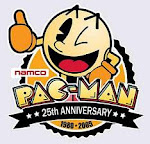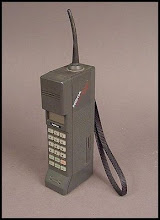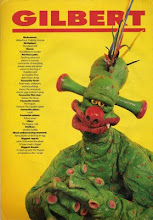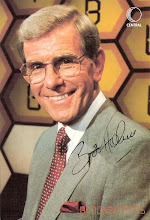 The Rubik's Cube was released in May 1980 but did not arrive in England until just before Christmas. It was declared Toy of the Year by the British Association of Toy Retailers, but was in short supply until the spring of 1981.
The Rubik's Cube was released in May 1980 but did not arrive in England until just before Christmas. It was declared Toy of the Year by the British Association of Toy Retailers, but was in short supply until the spring of 1981. -
Unemployment topped two million; the '70s hard times continued - not a Yuppie in sight. In December, John Lennon was shot and killed, sending his many fans into mourning. Ronald Reagan won a landslide victory to become President of the United States. The 1980s as we know them would never have happened without him.
Suddenly, just about everybody had the right to buy their council houses. Groan! But these were not the first council house sales. Council houses had been being flogged off for yonks.
Sales rose in the early 1970s with 46,000 dwellings sold in England and Wales in 1972 and 34,000 in 1973.
Before 1980, council house sales were discretionary. Councils which sold houses most actively were Conservative-controlled.
I lived in an area where council house sales were rampant back in the early 1970s. For more on this, see my 1970s blog here.
-
The 1980 legislation introduced a higher discount rate and made the right to buy more universally available to tenants.
-
The BBC launched Children In Need.
The Ecover company, makers of ecologically sound cleaning products, was founded in a small cottage in a rural town in Belgium in 1980. In 1989, Ecover products finally appeared on supermarket shelves and became enormously popular in England.
England's first nudist beach opened on the 1st of April - in Brighton, where else?
-
The newly named and manufactured Rubik's Cube trademark was registered here on the 7th of May, but stocks did not start arriving until just before Christmas. It still made Toy of the Year.
-
Space Invaders, first exhibited at a London trade show in 1979, were beginning to make their presence felt.
We were a breadline family, living in a breadline area, and it was no use pretending that the 1970s had been a feast of fun. They had been a time of recession, strikes and rampant inflation. I hadn't even set eyes on "Pong" until the Christmas 1979 episode of George & Mildred. It was one of Tristram's pressies. Mind you, I had better-off friends and none of them had Pong either.
Computers were for boffins, Dr Who and making mistakes on utility bills as the 1980s began. It's amazing to look back on the way they've evolved since those days.
In 1980, just 5% of households in the UK had video recorders.
Trousers were trouble for many comp. school kids in 1979 and 1980. For years, we'd worn flares. Never questioned it. They'd been around since the hippie years of the 1960s and somehow got stuck. We didn't wear them because we were hippies - we regarded hippies as a '60s thing, and anybody calling us that would have got a mouthful - or worse. No, we wore flares simply because they "woz" fashion. And woe betide any kid who didn't wear them. There was a strong pack instinct on the council estate where I lived and you had to fit in. Or get picked on.
-
But, towards the end of the 1970s, fashion decided enough was enough, and so we moved into straight trousers. Or at least we did when we could afford it. The recession bit deep and it was a slow transition. There were still a lot of flares around in 1980.
-
The trouble was that in 1979 and 1980 whatever we boys wore in the way of trousers drew jeers from girlies smugly attired in skirts or dresses. If we wore flares it would be: "Flaredypops! Come on, pop pickers!" They had suddenly been relegated to the distant past. If we wore straights, there would be a sneered: "Ooh, I like your straights! Very fetching!" You couldn't win!
The Ska revival tightened its grip, with the film Rude Boy, and hits like the Beat's Mirror In The Bathroom and Stand down Margaret, the Selecter's Missing Words and the Specials' Too Much Too Young. The Ska look was so in and those Rude Boys were everywhere.
-
It was a golden year for Madness, which included several of their best-loved songs - Baggy Trousers amongst them. Oops Upside Your Head had us all doing the rowing thing down on the floor. The Nolans had a great year; Sheena Easton, Liquid Gold, Kelly Marie, the Cure, Adam And The Ants and Spandau Ballet all made their first chart appearances; David Bowie's Ashes To Ashes video was a New Romantic trailblazer; robotic dancing was increasingly popular.
-
Sheena Easton, Kelly Marie and a few others helped advance the notion of colourful boiler suits as fashion. Some called them jump suits, others called them flying suits. Kelly called hers a "cat suit".
Er, no, that famous 1960s garment was rather tighter-fitting!
Of course, the bravest animals in the land were Captain Beaky And His Band, and the Korgis informed us that Everybody's Got To Learn Sometime. Still sends shivers down my spine, that song.
-
Buster Bloodvessel and Bad Manners were absolutely brilliant.
Disco had fallen victim to the "Disco Sucks" campaign in America in the late 70s, but over here we had no issues with it as the 80s began. The classic Let's Go Round Again and Stomp both charted, and we loved 'em.
In September, Ottawan gave us D.I.S.C.O.
Chas and Dave couldn't be described as disco by any stretch of the imagination, but in December they were very popular with Rabbit.
-
Splodgenessabounds requested Two Pints Of Lager And A Packet Of Crisps Please. Did that poor bloke ever get served?
Our Tune began on Radio One's Simon Bates Show.
-
Also, over on Radio Two, the often controversial soap opera Waggoners' Walk, which had been on air since April 1969, was last broadcast in 1980 - all part of the BBC's cutbacks. More here.
The saga of Ambridge continued in BBC Radio 4's everyday tale of farming folk, The Archers. Doris Archer died quietly in her armchair as actress Gwen Berryman was too unwell to continue in the role she had played since 1951.
Something called the Sony Stowaway crept into the country in 1980. In 1981 it would be patented here under its original name - Sony Walkman.
The number of illegal breakers swelled enormously in 1980 and a mass rally in London demanded the legalisation of CB radio - although some model aircraft users were worried that it would interefere with their frequencies.
CB radio was invented by American Al Gross in the 1940s and has been in use in the USA since the 1950s.
The Adventure Game began - green cheese rolls with Uncle the teapot on Planet Arg. Bliss. Yes Minister debuted and the pilot episode of Hi-De-Hi was screened - all three shows were treats from the BBC.
Hart To Hart first appeared here on ITV on January 27th. TV was more of an event in those days, with only three channels, and most of us looked forward to the first feature-length episode. Max, the Hart's friend and manservant, had the famous catchphrase "'Cos when they met it was murder!", spoken over the opening credits, but in the first series he said "I look after both of them which ain't easy - 'cos their hobby is murder". The better known version arrived later.
More about Hart To Hart here.
The Dukes of Hazzard, first shown by the BBC in 1979, which was also the year they debuted in America, moved to their legendary Saturday tea time slot in 1980.
In late 1979, a series listed in the TV Times as The Minder, starring George Cole and Dennis Waterman, began on ITV.
The show (which was, of course, simply Minder) was not an immediate hit. The format was tweaked over the next year or two, and the comedy element was increased (in fact, judging by a comment in a mid-1980s TV Times, the show's comic content was still on the increase then).
Read more about Minder here.
-
Not The Nine O'Clock News had begun in late 1979, but the first series had slipped by virtually unnoticed. The original team consisted of Pamela Stephenson, Mel Smith, Rowan Atkinson and Chris Langham. It was felt that Chris wasn't quite right for the show and so, for the 1980 series, he was replaced by Griff Rhys Jones.
Not... had arrived.
-
Blankety Blank was in its second year and 321 in its third. Both were extremely popular with viewers.
Monkey, shown on BBC2 on Friday evenings since 1979, was becoming a cult.
Family Fortunes and Play Your Cards Right began, as did Arthur C Clarke's Mysterious World. In these programmes, Mr Clarke examined various mysteries of the world, usually ending by debunking them. "Do people really burst into flames for no reason? I don't think so." Well, that was a relief!
Juliet Bravo and The Gentle Touch began, flying the flag for England's female cops.
Ena Sharples made her last appearance in Coronation Street in April. Actress Violet Carson had had several long absences from the programme in the 1970s, due to ill health, and this was supposed to be another break. Consequently, there was no big send off for Ena. As Ena bowed out and left our television screens for the last time, Metal Mickey bowed in. Was this progress?!
London cabbie Fred Housego won Mastermind and became a national folk hero. Barbara Woodhouse was out for a "walkies".
-
David Hunter was shot in Crossroads and JR Ewing in Dallas. The latter sparked huge interest and "I SHOT JR" and "WHO SHOT JR?" T-shirts, stetsons, car stickers and badges abounded.
See here for more.
And what about Dallas spin-off, Knots Landing - which told the tale of alcoholic Ewing brother Gary and his wife Valene, as they attempted to find happiness away from Southfork? The Knots pilot episode was shown in America on 27 December 1979, with a full first season of episodes to follow early in 1980. Here, we had our first opportunity to visit the Landing in 1980. It was never going to challenge its older sibling, but it was intriguing enough.
More American pot boilers were soon to follow...












